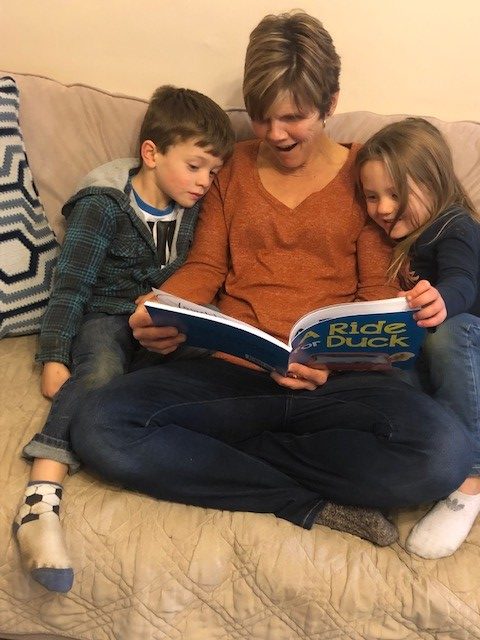Chronic ear infections, also known as chronic otitis media (COM), can be a long-term, non-resolving condition that may cause hearing loss over time. Has your doctor talked to you about the benefits of a bone conduction solution to treat your hearing loss from chronic ear infections yet? If not, learn about the Cochlear™ Osia® System today:
What is chronic otitis media?
Chronic otitis media occurs if a middle ear infection does not resolve (chronic ear infections), causing a chronic middle ear drainage condition that results in ongoing ear infections. This condition increases the risk of middle ear problems, which can cause conductive or mixed hearing loss.
Conductive or mixed hearing loss occurs when damage to the outer or middle ear blocks sound vibrations from reaching your inner ear. People who have conductive hearing loss may feel like their ears are plugged and speech may sound muffled. With mixed hearing loss, there may be inner ear damage as well. Depending on the amount of hearing loss, a bone conduction solution could be a solution. This is where the Osia System can come in.
How could The Osia System help?
The Osia System uses your natural ability to conduct sound through bone vibrations. With bone conduction, sound bypasses the damaged outer or middle ear and sends clearer, more crisp sound directly to your inner ear.1
Unlike a hearing aid, which tries to push sound through the damaged part of your ear (in the case of chronic ear infections), the Osia System bypasses your middle ear problems and sends sound straight to your functioning inner ear (cochlea).
Benefits of the Osia System
Although the main goal in treating chronic otitis media is to achieve an ear free of infection, some chronic ear infections are almost impossible to treat. For those that are suffering with persistent ear infections, the Osia System helps the ear canal to remain undisturbed during the healing process.
Hearing loss affects all ages, and loss of hearing can have negative impacts on both adults and children. For children, a limited ability to discern sounds can affect a child’s intellectual and emotional development,2 while loss of normal hearing later in life can lead to isolation from friends and family and potential career roadblocks.345Treating hearing loss is important for your or your child’s health and well-being.
How the Osia System helped other sufferers of chronic ear infections
Shelley:
 When chronic ear infections led to hearing loss at an early age, Shelley found herself feeling isolated from the world around her. When she received the Osia System, she regained the joy of sound and much of the socialization that she had missed out on for many years. Read more about Shelley’s journey here.
When chronic ear infections led to hearing loss at an early age, Shelley found herself feeling isolated from the world around her. When she received the Osia System, she regained the joy of sound and much of the socialization that she had missed out on for many years. Read more about Shelley’s journey here.
Jeannie:
 Partial hearing loss became “normal” to Jeannie for three decades. When the COVID-19 pandemic hit in 2020, she reassessed the impact of her hearing loss when she could no longer read lips during conversation. Now that she has the Osia System, she can fully be present with her family and enjoy the simple things in life like conversations with the person next to her. Read her story here.
Partial hearing loss became “normal” to Jeannie for three decades. When the COVID-19 pandemic hit in 2020, she reassessed the impact of her hearing loss when she could no longer read lips during conversation. Now that she has the Osia System, she can fully be present with her family and enjoy the simple things in life like conversations with the person next to her. Read her story here.
Are you or a loved one struggling with hearing loss from chronic ear infections? Take the step today to learn about the Osia System to help you find the relief you have been hoping for.
- Gustafsson J. BCDrive performance vs. conventional bone conduction transducer. Cochlear Bone Anchored Solutions AB, 629908, 2015.
- Bidadi S, Nejadkazem M, Naderpour M. The relationship between chronic otitis media-induced hearing loss and the acquisition of social skills. Archives of Otolaryngology – Head & Neck Surgery. 2008 Nov;139(5):665-70.
- Helvik AS, Jacobsen G, Hallberg LR. Psychological well-being of adults with acquired hearing impairment. Disability and Rehabilitation. 2006 May 15;28(9):535-45.
- Lieu JC. Speech-Language and Educational Consequences of Unilateral Hearing Loss in Children. Arch Otolaryngol Head Neck Surg. 2004;130(5):524-30.
- Kesser BW, Krook K, Gray LC. Impact of Unilateral Conductive Hearing Loss Due to Aural Atresia on Academic Performance in Children. Laryngoscope. 2013;123:2270–2275.